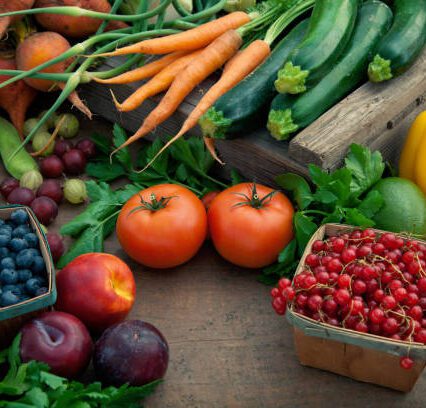Summer Fruits & Veggies

Often, buying seasonal produce seems out of reach, however, it is much more beneficial than it may seem. Buying seasonal produce has many benefits beyond simply just the better, more high quality produce you get to enjoy.
On the contrary: By doing so, you’ll find many benefits both for yourself and your community; Some of these benefits include:
· Less expensive produce
· Fresher, better-tasting produce
· More sustainable eating habits with a smaller carbon footprint
What’s available and at its peak at any given point within a season depends on where you are, especially within the Pacific Northwest where we are accustomed to diverse climates. Because of that, there may be some variations on seasonality with the fruits and veggies we mention here, but below we’ll go by what’s in season in the western lowland parts of Washington and Oregon, where our stores are located (with some seasonal produce from Eastern Washington and Oregon for fruits and vegetables that are prominently sourced from those regions).
While all the produce we’ll mention is in season in the summer, they all have parts of the summer when they’re the most in season. For example, west of the Cascades, blackberries are at their best in the late summer in August and early September. (When it comes to growing your own produce, this can be even more granular; your strawberry patch on the south side of the house might get ripe far earlier and produce more fruit than a patch on the opposite end.)
Herbs And Aromatics
Along with fruits and veggies, there are also a lot of herbs that flourish in the summer season. These are most plentiful, freshest, and at their least expensive in a supermarket like Uwajimaya during this time, but you can also grow them yourself — often quite easily.
Some popular ones include:
· Mint
· Basil
· Chives
· Garlic
· Dill
· Thyme
· Cilantro
· Sage
· Rosemary
· Oregano
· Horseradish
Some of these, like mint and chives, are more year-round than others but still hit a massive growth spurt when the weather heats up. Mint and horseradish in particular can grow like mad and take over other parts of your garden if not contained, so be mindful of that if you’re growing your own.
Otherwise, these summer herbs add freshness to your dishes (or drinks, if you’re so inclined). Off the top of our head: Sage can be an aromatic addition to a brown butter sauce, oregano and basil are a common kick of freshness in tomato-based meals, and chopped chives and grated parmesan can make a killer savory Dutch baby pancake
Leafy Greens:
· Arugula
· Beets and their beet greens
· Mustard greens
· Lettuce
· Kale
These can be a great thing to grow in your garden. Beets in particular are wonderful because you get two ingredients in one. Beet greens are delicious in salads and sandwiches but are also great sauteed lightly in a pan-like spinach. They’ll shrink a lot, so throw down way more greens than you think you want if you’re cooking them.
Berries And Bite-Sized Fruits
These are some summer staples:
· Raspberries
· Blueberries
· Blackberries
· Strawberries
· Cherries
· Grapes
We include other bite-sized fruits that aren’t berries because neither cherries nor grapes are berries, but it still feels like they belong here, right?
Grapes are kind of tweeners, seasonally, coming into season at the end of summer and well into the fall. Blackberries and blueberries similarly are available for much more of the summer, but they’re at their peak later in the season.
Classic Summer Vegetables
But of course:
· Cucumber
· Peppers
· Carrots
· Corn
· Peas
· Green beans
· Tomatillos
· Summer squash
· Sweet onions
· Tomatoes
Yeah yeah — “tomato is a fruit” and all that — but, culinarily, is it really? If you live somewhere that gets good sun, you can grow some really great ones too. Tomatillos also love a sunny patch and can be grown in the Pacific Northwest if you have a warm patch that gets good light, too.
And of course, peppers, beans, sweet onions, and corn are all classics for this time of year.
Classic Fruits
· Plums
· Nectarines
· Peaches
· Citrus fruits
· Melons
Some melons, like cantaloupe and honeydew, will be at their best in late summer and September, while of course watermelon is the classic summer-long snack. And how many of us have childhood memories of nectarine and peach juice dripping down our hands every summer?
Asian Summer Produce at Uwajimaya
Finally, there’s a lot of produce that’s more commonly associated with Asian or tropical cuisines that’s seasonal to summer, and unfortunately many of these aren’t available at all or even many grocery stores in the US. (Luckily, we’ve got them!)
These include both fruits and vegetables. Some of our favorites are:
· Lychee
· Dragon fruit
· Passionfruit
· Bok choy
· Chinese, Japanese, Indian, and Thai eggplants
Whether you’re growing your own or just informing your shopping list, there really are so many advantages to seasonal produce. Both for yourself and your community, in-season produce is where it’s at!





